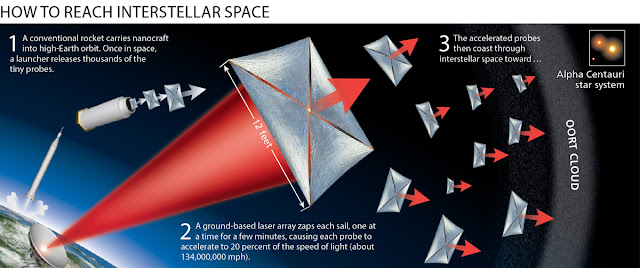What is Dark Energy?
 |
| the composition of the universe as of now |
Dark energy is the name given to a class of possibilities to explain the late time acceleration of the expansion of the universe. It accounts for roughly 73% of the energy density of the universe. There are several dark energy models. The simplest is a "cosmological constant", but other options are vacuum energy, quintessence, and more. Most of these models predict that dark energy does not vary spatially, and so it is difficult to distinguish the models.
The expansion of the universe is governed by the Friedman equation(s), which quantify the rate of change of expansion as determined by the energy density of stuff in the universe. By observing objects far away (and seen deep in the past because of the finite speed of light), astronomers can reconstruct the expansion history of the universe. Knowing the expansion history and trusting that the Friedman equation is valid amounts to determining the energy density of the universe.
Different types of energy densities dilute in different ways as the universe expands, leading to different expansion histories when those different components dominate. For example, regular matter dilutes with the cube of the "scale factor" of the universe (conservation of particle number), whereas radiation dilutes with the fourth power of the scale factor (conservation of photon number and another factor from redshifting of radiation). This leads to the expansion being decelerated more when radiation dominates than when regular matter dominates (note that dark matter is regular matter as far as this is concerned).
 |
| Evolutionary theory of the universe |
In fact, all normal stuff -- photons, neutrinos, dark matter, baryonic matter (protons, neutrons etc) -- decelerates the expansion of the universe. It is surprising then that at about half the age of the universe, the expansion began to accelerate.
One way to sum up many of the possibilities when discussing what some type of stuff does to the expansion of the universe is to quantify the equation of state of that matter or energy. This is usually in the form of a relationship between the pressure and density of that stuff. A common form is
where w is called the equation of state parameter. Radiation has w = 1/3, whereas regular matter looks like w = 0 on cosmological scales. Anything with an equation of state parameter w would lead to an acceleration of the growth of the universe.
The latest measurements have w consistent with -1 for whatever is dominating the universe at late times, causing it to accelerate. This is consistent with the type of dark energy known as a cosmological constant OR with vacuum energy. Vacuum energy has the problem of disagreeing with calculations from quantum field theory.
Because the acceleration is somewhat gentle and the measurements are difficult to make, the data are currently unable to discriminate between different models of dark energy.
 |
| Possible models of the expanding universe |
The nature of dark energy ultimately determines the fate of the universe. A vanilla cosmological constant or vacuum energy would lead to an exponential expansion. Dark energy with w < -1 (sometimes called phantom dark energy) would cause faster-than-exponential expansion, ending in the "Big Rip" -- the scale factor going to infinity in a finite amount of time, a true singularity.An alternative to dark energy which is explored in the cosmology community is the modification of General Relativity at small curvatures (long length scales, corresponding to the size of the universe) in order to make the universe accelerate from gravity alone. Many of these models are untenable for various technical reasons, but there are infinite possibilities. A valid model would have to
- reproduce the expansion history of the universe
- not modify the clustering of galaxies and galaxy clusters and
- agree with GR at short (galactic and solar system) scales.
These are stringent requirements.
Dark energy fits within the framework of the standard model of cosmology, which has GR as one of its ingredients. It should not be confused with modifications to GR, which are a different approach to address the issue of late time acceleration.
After all this motherload of information it is normal to feel lost and not being able to exactly distinguish between Dark Matter and Dark Energy. So the next blog post will clear all your doubts and maybe help you feel superior and good about yourself!
Ciao!


Comments
Post a Comment